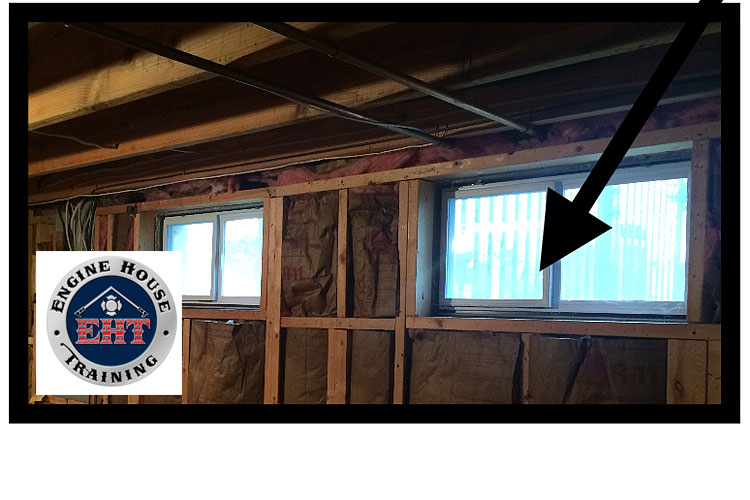
Throw Back to Basics | By Brian Zaitz
Basement fires are some of the most dangerous fires that firefighters encounter, often requiring us to move over the fire and down a “chimney” to access the fire. For this reason, it is imperative that we understand as much about the basement as we can prior to engaging in operations. Although we may not know the fuel load or basement layout, we can gather some clues during our 360 if we know what to look for or what the building is telling us.
Whenever you conduct your 360, it is critical to note if a basement exists. If it is not present, note it and communicate it to command. If it is present, do the same and make note of the windows, paying attention to their size and location. It is important because these windows can give you some insight into the basement and play into your tactics. For example, casement windows provide little avenue for egress from the basement for firefighters as well as little ventilation for a basement fire. They do, however, provide an avenue for water flow from the exterior. Look out for windows that may provide an avenue of egress if needed. If you find the area covered with a grate, move it to the side during your 360 so as to allow for unimpeded exit if needed from the basement. A walkout basement will allow for total access into the building and allow the fire to be attacked on the same level–the best and safest practice when possible. Note that while a walkout is advantageous for fire attack, it does require longer portable ladders, as the backside now becomes a two- or three-story structure on the C side.
RELATED
- Basement Fire Strategy and Tactics
- Time to revise basement fire tactics?
- Recognition and Attack of Basement Fires
- UL Unveils Basement Fire Online Training Program
- Bob Pressler: BASEMENT FIRES
Although the windows provide insight, they do not provide definitive proof of the basement layout. Many might say the casement windows cannot lead to a bedroom because of code violations. This is true, but in reality many homes are remodeled and converted with no attention to code.
Take the time to walk through new home construction in your area and talk with the builders, as they have firsthand knowledge of what is new in construction and what we will face on our next fire. Pay attention on the 360–it is not just a hot lap around the building, it is meant to provide insight and clues so as to make a more effective, efficient, and safe fire attack.
Download this training bulletin HERE (PDF).
Brian Zaitz  is a 15-year student of the fire service and the Captain-Training Officer with the Metro West Fire Protection District. Zaitz is also an instructor with Engine House Training, LLC , an instructor at the St. Louis County Fire Academy, and the Board of Director with the International Society of Fire Service Instructors. He has several degrees including an associates in paramedic technology, a bachelor’s in fire science management, and master’s in human resource development. Zaitz is also a credentialed chief training officer through the Center for Public Safety Excellence as well as a student of the National Fire Academy’s Executive Fire Officer Program.
is a 15-year student of the fire service and the Captain-Training Officer with the Metro West Fire Protection District. Zaitz is also an instructor with Engine House Training, LLC , an instructor at the St. Louis County Fire Academy, and the Board of Director with the International Society of Fire Service Instructors. He has several degrees including an associates in paramedic technology, a bachelor’s in fire science management, and master’s in human resource development. Zaitz is also a credentialed chief training officer through the Center for Public Safety Excellence as well as a student of the National Fire Academy’s Executive Fire Officer Program.
MORE THROW BACK TO BASICS

